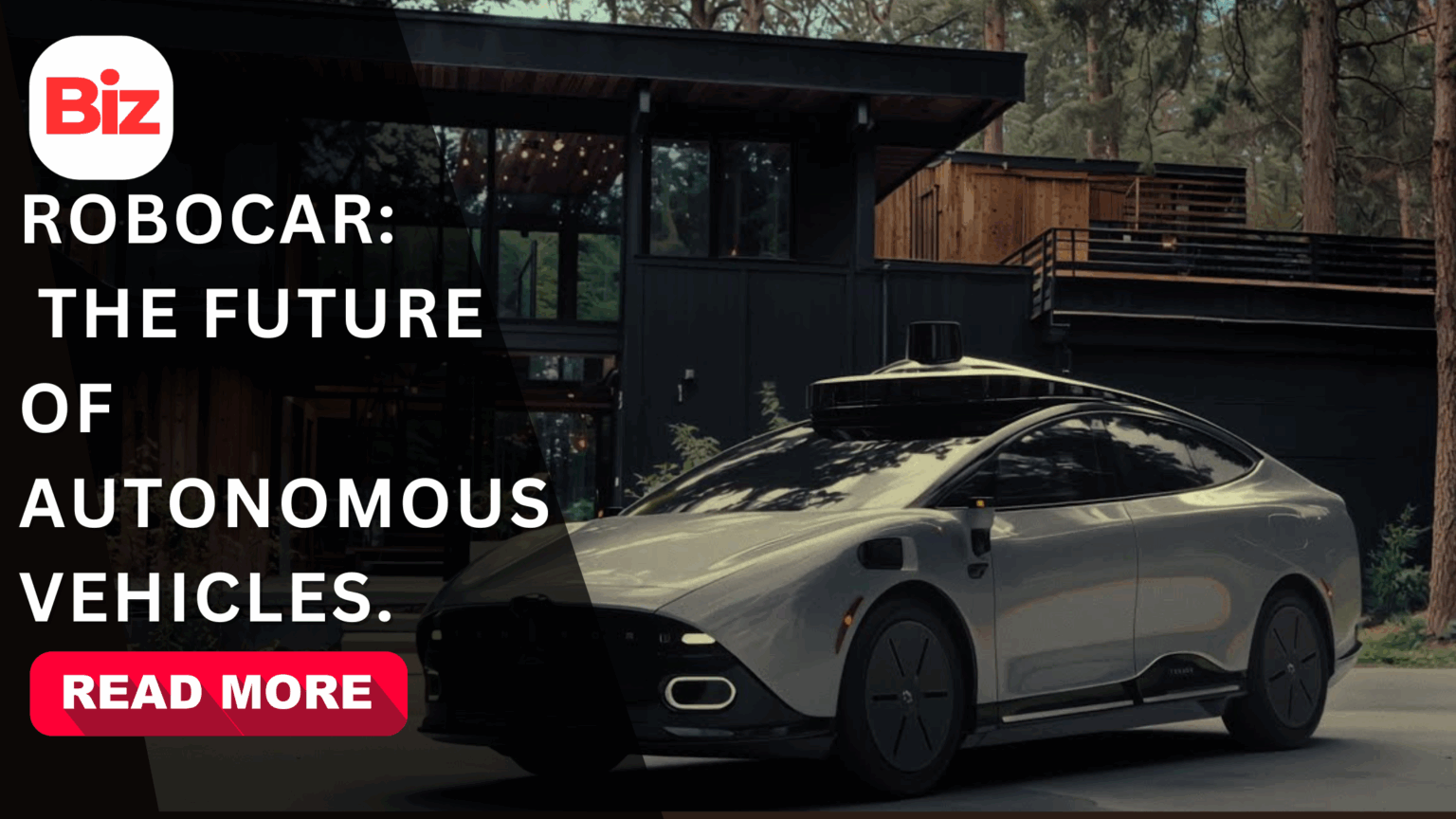The manner in which human beings move has always been influenced by technology. Since the time of the invention of the wheel and the steam engines, combustion cars, and in the latest development, the electric cars, every innovation brought the society a step closer to efficiency and convenience. We are about to enter another change today- the Robocar which is an autonomous car that will integrate artificial intelligence (AI), sensors, and sophisticated automation to transform transportation.
What Is a Robocar?
A Robocar is a driverless or self-driving car that is meant to work independently. Compared to the traditional cars where a driver is the only controller of the car, Robocars are controlled by:
- Artificial intelligence in decision making.
- Lidar and radar sensors
- High-definition cameras
- GPS and real time mapping software.
A combination of these technologies enables the Robocars to sense the surrounding environment, examine the traffic, and make driving decisions, such as how to brake, accelerate, or change the lanes, without any human intervention.
The Evolution of Robocars
The path leading to the Robocars did not occur in a night.
Early Concepts (1920s-1980s)
The concept of self driving cars was being used in science-fiction novels and films well before technology could bring it to a reality. There were crude experimental prototypes which appeared in research laboratories in the 1980s, however.
The Age of AI and Automation (1990s-2000s)
At the emergence of AI and machine learning, car manufacturers and technology firms started to experiment with sophisticated prototypes. In 2004 with the DARPA Grand Challenge, the teams demonstrated autonomous car navigation in desert conditions.
Modern Robocars (2010s-Present)
Firms such as Tesla, Waymo (a Google company) and Uber advanced the developments by bringing self-driving systems to the streets. RoboCars are not just a science fiction any more, nowadays they make up test fleets in the streets of cities all over the globe.
How Do Robocars Work?
Robocars are based on five major technologies to operate:
- Sensors Lidar, radar, ultrasonic sensors and cameras are sensors used to detect obstacles, pedestrians, and traffic lights.
- AI Algorithms – Machine learning assists the RoboCars in estimating the conditions of the road and making safe driving decisions.
- Mapping Systems – 3D maps on the high definition maps give the car an idea of its precise location on the road.
- Connection – IoT technology offers connectivity between RoboCars and traffic infrastructure and other cars.
- Control Systems – The decisions made by AI are performed by automated braking, acceleration, and steering.
It is the smooth integration of these systems that make Robocars become safe and reliable cars.
Benefits of Robocars
The convenience is certainly not the only promise of Robocars. Some of the most outstanding benefits include these:
Improved Road Safety
More than 90 percent of accident on the roads can be attributed to human error. The AI-controlled RoboCars would help to severely decrease the number of accidents due to a distracted driver, fatigue, or poor judgment.
Reduced Traffic Congestion
Robocars are able to communicate with each other, improving the movement of the traffic and minimizing unnecessary stops, processes, and accidents.
Accessibility for All
The elderly, the disabled would obtain a sense of independence and mobility.
Environmental Benefits
Together with the technology of electric vehicles, RoboCars would be able to contribute to a considerable reduction in emissions since it would move more efficiently and spend less time on the road.
Productivity and Comfort
The commuters would not have to concentrate on the driving process anymore, and they could work, have their leisure time or enjoy their ride.
Challenges Facing Robocars
Robocars have a number of challenges before going mainstream despite the excitement.
Safety Concerns
Although AI is sophisticated, unpredictable human actions on the road are significant issues to the RoboCars like jaywalking or driving carelessly.
Legal and Ethical Issues
Who owns the liability in case of an accident, the car owner, the manufacturer or the developer of the AI? Such questions are still not addressed in most nations.
Cost of Technology
The AI and sensors that are used to drive Robocars are not cheap and this makes the cars unaffordable.
Cybersecurity Risks
Being a networked car, RoboCars will be susceptible to hacking that will jeopardize road safety and passengers.
Infrastructure Limitations
Smart cities, modern road networks, and powerful 5G networks are some of the requirements of RoboCars.
Robocars and Society: Cultural Change.
With the introduction of Robocars, not only the technological change will occur but also cultural shifts.
- Impact on the Job Market: Trucking, taxi, and delivery services: Professional drivers will be affected in terms of job disruption as robots replace them.
- Urban Planning: Cities could use the parking lot areas to convert to green space or residential.
- Insurance Models: The car insurance that has always existed will have to be changed, and it may be changed in that the liability may pass to manufacturers and software companies.
- Consumer Behavior: There is a possibility of a shift in the concept of car ownership, in which people might stop owning cars, opting to ride RoboCars.
Robocars and Traditional Cars.
In order to get a clear picture on the revolutionary effects of Robocar, we are going to compare them and ordinary cars:
- Characteristic Classic automobiles Robotic cars.
- Driver Control 100% controlled by humans 0 AI controlled.
- Safety High risk of accidents Less accidents through automation.
- Efficiency Traffic jam typical Streamlined flow of traffic.
- Availability Only to licensed drivers only Can be used by anyone of any age or ability.
- Environmental Impact Emission-intensive, fuel-intensive Fuel-intensive, possibly greener with EV implementation.
Obviously, RoboCars are the next step in the sphere of efficiency, safety, and inclusiveness.
The Future of Robocars
The future of Robocars is very promising and unpredictable. Experts estimate that RoboCars may constitute a good proportion of vehicles in the road by 2035. We may see:
- Whole Robocar taxi armies displacing ride-hailing drivers.
- Highway Autopilot systems in personal vehicles start gaining use.
- The inclusion of AI copilots to help human drivers until complete autonomy is universal.
- Governments developing smart roads systems specifically used by RoboCars.
- The future of transportation is autonomous, but the footing is definitely getting better.
Conclusion
The Robocar is not just another kind of car but it is also a new beginning and a new phase in smarter, safer, and more efficient societies. AI, sensors, and automation in perfect harmony with each other are set to transform the way we travel, work, and live with RoboCars.
Like any significant innovation, there are issues to be discussed, some of which are legal issues, others are infrastructure issues. However, there is one thing which is a certainty and that the Robocar is not merely coming but it is here and it will be the next generation of mobility.








